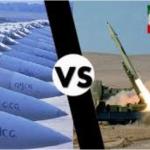Summarizing the various Christologies that led to Chalcedon, Jenson ( Systematic Theology: Volume 1: The Triune God (Systematic Theology (Oxford Hardcover)) (Vol 1) , 130-3) points to the fateful influence of Leo’s Tome. It affirms the “unobjectionable” claim that Jesus is “true God” and “true man,” but then adds: “Each nature is the agent of what is proper to it, working in fellowship with the other: the Word doing what belongs to the Word and the flesh what belongs to the flesh. The one shines forth in miracles, the other submits to the injuries.”
Bitingly, Jenson sums this up as “each nature does its own thing,” and he describes Leo’s formula as “the Antiochene doctrine or something rather cruder.” In any case, Jenson sees it as a direct assault on Cyril’s insistence on “the theological unity of the gospel narrative.” For Leo, each nature can be viewed as “a distinct agent of its part of the gospel narrative.”
The Tome was quoted in the decree of Chalcedon and appended to interpret the decree. But the effect of the Tome on Chalcedon, Jenson thinks, was basic. The decree doesn’t say anything about agency of the one hypostasis , which leaves the natures as the active agents. Hypostasis has little to do, and in Jenson’s view it cannot even be buttressed by Trinitarian usage: “in trinitarian theology, it is a hypostasis that has a ‘distinguishing character’ and is an agent within the total divine saving history,” while in Chalcedon, “these features are attributed instead to the natures.” Suspicious readers of Chalcedon viewed “one and the same” as mere “verbiage,” and Jenson says “it is hard to say they were wrong, taking the text just as it stands.”















